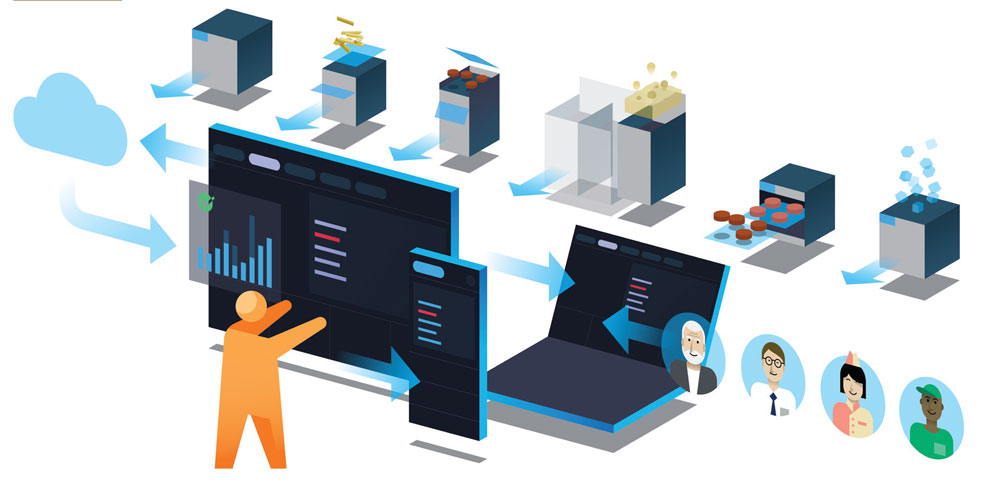
In one of our earlier article, we talked a little bit about the Internet of Things (IoT) and the role it can play in a commercial kitchen. A result of marriage between technology and automation, the connected foodservice kitchen is no longer on the cusp of becoming a reality; this blue-sky vision of truly integrated connectivity has already been realised. The connected kitchen not only strives to improve food consistency and diminish human error and injuries, it also helps to slash food waste and energy consumption while enhancing food safety, reducing labour costs and maximising equipment performance as well as operating life. In the connected kitchen, data is easily shared among systems, equipment and mobile devices and this data can be accessed in real time in the cloud, analysed and acted upon remotely or automatically based on the information being exchanged to improve operations, guest satisfaction and profitability.
It is vital to have complete visibility and control over the daily kitchen operations as equipment like stoves, ovens, deep fryers, refrigerators, walk-in freezers and HVAC systems all require regular monitoring for breakage, temperature, and compliance. As a result, restaurant employees are often compelled to check on them multiple times during the day and record data on temperature and energy consumption. This does not only affect productivity, but also hampers product quality and creates unwanted expenses in the long run.
To put the power of information and application of digital technology to work so that commercial kitchen processes can be optimized, food quality and the guest experience can be improved, waste and equipment downtime can be reduced, menus and software can be done remotely, and increased revenue can be realized, Welbilt’s KitchenConnect® digital service delivers 24/7 kitchen equipment integration with IoT technology and monitoring systems designed specifically for foodservice.
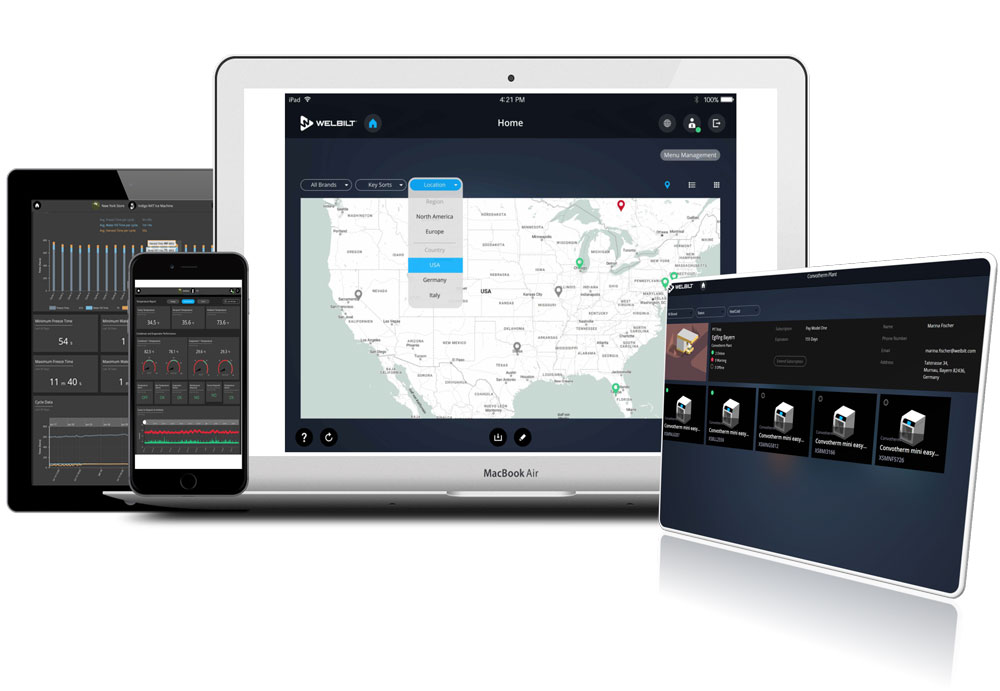
Actionable alerts to thousands of locations on 4 continents, 24 hours a day 7 days a week, put real time management at your fingertips. With information that is responsive, useful and simple to use, you can take operations from average to great and realize benefits like never before. Welbilt’s KitchenConnect gives you the peace of mind that even when you can’t be onsite, information from your restaurant can be available 24/7/365 wherever you are.
With Kitchenconnect’s dashboard, chefs, operators, restaurant managers, and multi-unit owners can unlock all the equipment information needed to optimise the operation of a commercial kitchen, including:
Report Management – Consumption data (Electric, Water, Consumables), Cycle rates, Utilization rates, Operational status, Time charts (peak/low), Demand analysis (food), Error logs/needed actions, Production statistics, Descriptive analytics.
Asset Management – ID (Model, Serial#), Location (Geo Data), Status (SW, Firmware), Service provider, Installation data, Documents, manuals and videos, Warranty period, Store ID.
Menu Management – Up/down load (Cloud or USB), Product image management, Recipe creation & modification, Recipe library viewing/sharing, Daypart assignment, Product position assignment.
Quality Management – HAACP data, Cook/harvest/draft data, Temp min/max data, Cycle times (completed/cancelled), Equipment hazards (Door Open, Platen, Position, Power Break), Cleaning cycles, Quality measurements, Hold times.
Service Management – Equipment diagnostics, Error resolution guidance, Service reports, Warranty service, PM programs and guidance, Asset tracking
Scenario: Restaurant BYN has 4 outlets in different locations that have been integrated with Welbilt’s Kitchenconnect digital service. Through this integrated system, Restaurant BYN is able to monitor all of its restaurants’ operations, assets and equipment performance remotely via a mobile app. By having consumption data through the connected kitchen’s Report Management, Restaurant BYN is able to understand how much electricity, water and energy is used in all 5 restaurants. With asset management information, Restaurant BYN will receive data on when the warranty periods of any equipment is about to expire and can then make a decision on whether to send these equipment for any servicing prior to the warranty expiry date. Through its Menu Management information feature, Kitchenconnect allows Restaurant BYN to create, modify and share any menu as well as programme it to be used in all of its restaurant outlets. Hazard Analysis Critical Control Points (HACCP) compliance is of great importance for restaurants and other foodservice providers. Receiving HACCP data through Kitchenconnect’s Quality Management enables Restaurant BYN to address any food quality or hygiene concerns in all of its outlets and can decide on a course of action to address these issues immediately. Last but not least, Kitchenconnect’s Service Management feature provides Restaurant BYN with equipment diagnostics such as equipment downtime, failure or servicing. With these dashboard features by Kitchenconnect, Restaurant BYN is able to stay ahead and in control of all its restaurants’ operations remotely while keeping the focus on customer service at the same time.
KitchenConnect® follows an open approach, offering the connection flexibility restaurants and large chains need. It allows operators to connect equipment from companies other than Welbilt, additionally Welbilt equipment can be connected through other already existing or preferred platforms.
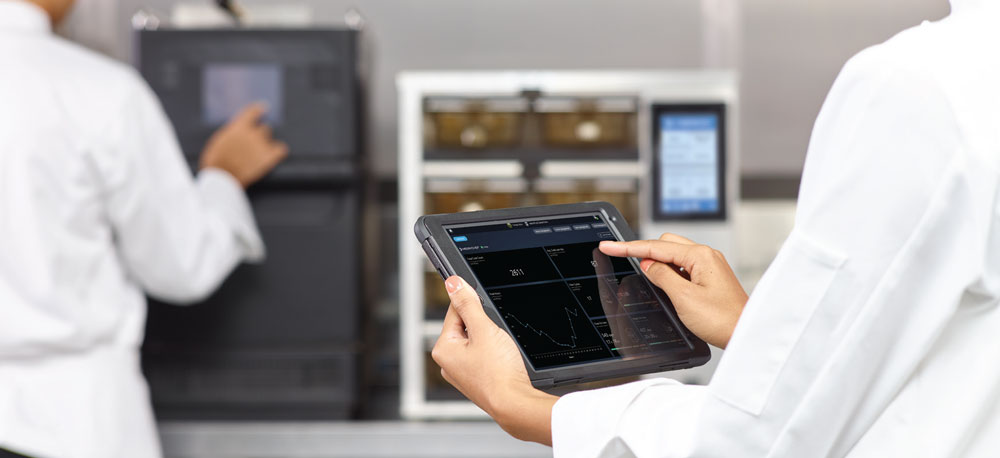
HOW COMMUNICATING KITCHEN SYSTEMS CUT COSTS
One of the biggest non-fixed cost in running a commercial kitchen is energy usage. According to surveys done by the US Department of Energy, restaurants use more energy per square foot than any other type of commercial building – more than three times the usage rate of the average commercial structure – as a result of the heavy demands of both cooking and refrigeration within a compact space.
Having a good communicating control system in place can easily lead to energy savings. Some of that is from optimising startup and shut-down of cooking equipment – something that kitchen staff tend to be too cautious about. With good data analytics, a connected kitchen can help stop ongoing energy leaks or wastage and maximise savings. For example, when a restaurant moves from breakfast service to lunch service, specific assets in the kitchen are no longer required. Data analytics and algorithms in a connected kitchen can detect any operating standard violations where assets are not fired up or down, and the operations center continuously works with the crew to ensure that such violations are eliminated or kept to a bare minimum.
Better Equipment Management
Apart from utility costs savings, installing a computerised kitchen monitoring system can also provide better management of equipment, with less downtime, longer useful life and fewer, smoother service calls. For example, if the system can determine that the refrigeration unit is having problems with the compressor, then kitchen staf can schedule a service call during normal service hours.
Hvac And Water Usage
HVAC usage in commercial kitchens is another huge drain on energy consumption, second only to food preparation. By installing a computerised management system of the kitchen’s HVAC, which is another big aspect of the communicating restaurant, energy costs can be further reduced while making the environment more pleasant for both guests and staff.
Water is a main component in the F&B industry and even more so in a commercial kitchen. While water used to be a minor utility bill previously, with rising costs today, rates are increasing faster than ever before. To save on water costs, commercial kitchens can add hardware like drip sprayheads but also sophisticated computerised control systems that take into account site-specific conditions such as heat, humidity, sunshine, and even water runoff patterns based on the type of soil. A private internet connection will allow managers to monitor conditions at each restaurant and alert them quickly to any problems.
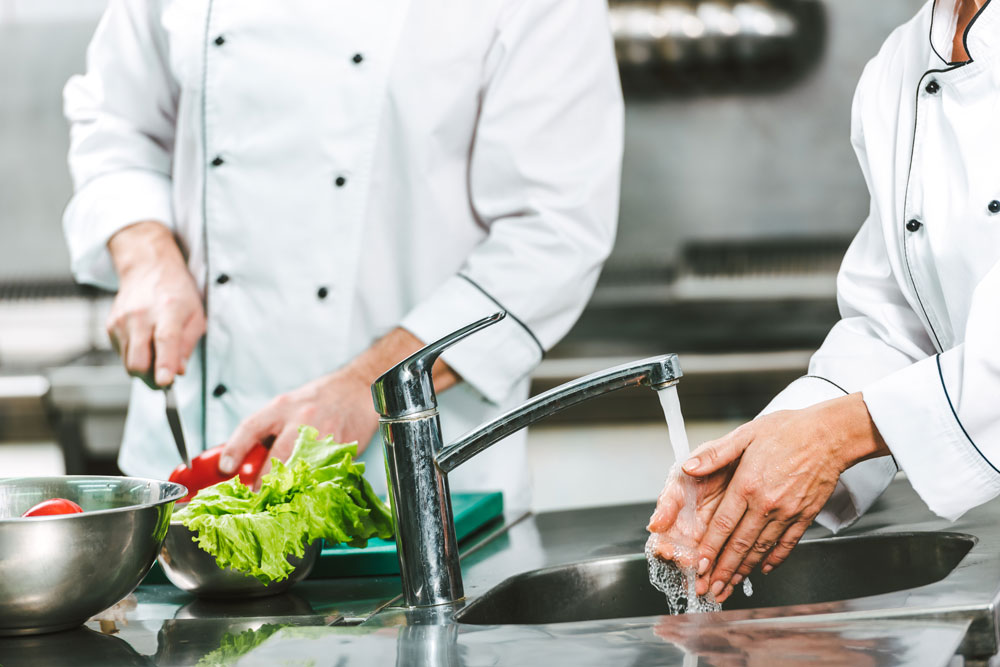
Communicating kitchen systems like Welbilt’s Kitchenconnect is already in wide use among QSR’s, fast casual restaurants, convenience stores as well as hotels and resorts. With rising labour and food costs as well as expensive leases and rentals, restaurant operators are looking for relief anywhere they can – this means more automation and data analytics to gain additional kitchen efficiency. With so much data stranded today that can be accessed to support the commercial kitchen, it is not hard to imagine that eventually, many commercial kitchens will adopt this kind of technology. Paving the way forward, Kitchenconnect by Welbilt aims to integrate all segments of foodservice so that information can be captured and stored, and everything from farm to fork can be monitored.
To learn more about KitchenConnect®, visit
https://www.welbilt.com/KitchenConnect/About
Q&A SEGMENT
To gain a little more information on ‘The Connected Kitchen and what the F&B industry may be may be able to expect from kitchens of the future, we interviewed Welbilt’s Director for FITKitchen & Connectivity Solutions, Mr. John Zhang.
What does a connected commercial kitchen (with KitchenConnect) look like?
The application of digital technology to kitchen operations makes it possible to put the power of information to work so that the food service industry can adapt to an ever-changing environment faster and more efficiently. Welbilt KitchenConnect digital platform offers numerous ways to harness this power to take operations from average to great, realising benefits like never before. KitchenConnect dashboard unlocks all the equipment information you need to optimize the operation of your kitchen.
Welbilt’s KitchenConnect is currently connecting with QSRs, FCRs, convenience stores, hotels and resorts; will this connected kitchen system be able to service smaller foodservice businesses like casual restaurants, coffee shops and bakeries etc?
KitchenConnect utilizes a host of functions to enable more efficient operation in commercial kitchens across all segmented concepts – this includes QSRs, FCRs, convenience stores, hotels, convention centres, fast casual, casual dining, coffee shops, grocery café, bakeries and commissary etc. It can be adapted effectively to food service businesses of all shapes and sizes across the industry. KitchenConnect provides equipment information for chefs, operators, managers, and multi-unit owners to optimize the operation of their kitchens and adapt to an ever-changing industry quickly and efficiently. The advantages are manifold and substantial.
How does KitchenConnect allow scalability for smaller foodservice operators and how can Welbilt help integrate the connected kitchen system into their operations?
Welbilt has connectivity solutions tailored to different market segments and sizes. We offer different options and solutions for large companies and we also have 3rd party partnership model for middle tier customers. For smaller foodservice operators who may not have the necessary IT infrastructure and just want to access their equipment, KitchenConnect can help integrate their equipment and provide them the subscription of dashboard for all management reports.
IoT restaurant technologies like the connected kitchen and KitchenConnect may cost more than their traditional counterparts, so how will smaller foodservice businesses afford to implement this integrated system?
IoT restaurant technology may cost slightly more, however it pays for itself with the money and value added. For example, real-time temperature monitoring satisfies HACCP requirement for food safety, reliably and without any manual effort. It allows our clients to safeguard products which may be worth over $1,000 plus. KitchenConnect allows the interoperability between products to standardise, maintain, and assure food safety, compliance, and energy management. By making the move to KitchenConnect, we expect smaller food service business to become more profitable with more streamlined operations.
Is KitchenConnect limited to certain menus only? Can it come into the Asian foodservice market with its various types of menus? What is flexible about it?
Welbilt’s KitchenConnect applies digital technology to optimise kitchen operations. It collects data from equipment, analyses and processes the data; and provides real-time insights, allowing completely secure visibility of equipment operations within an entire kitchen. It facilitates man to machine and machine to machine interactions. The application of this technology is not limited by market or menus. We already work with many clients across different geographic regions, in different markets and with diverse menus. It has been proved that this technology is flexible and broadly applicable for the Asian foodservice industry.
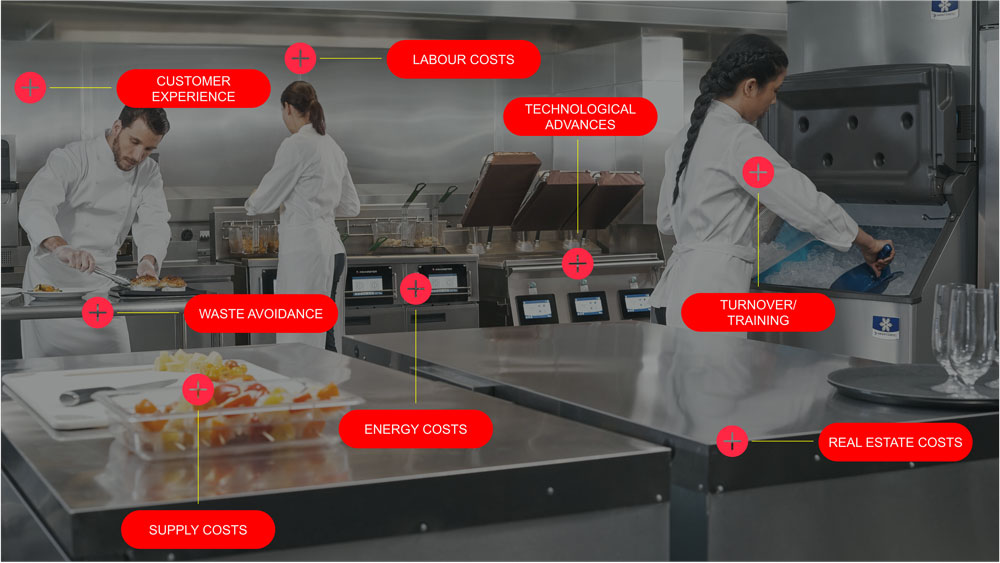
Now that we have reached that magical point where multiple technologies has combined to give birth to ‘The Connected Kitchen’ like KitchenConnect, what more can commercial kitchens come to expect after this?
Today in our current industry, most equipment available on the market are designed with individual digital solutions for their own unique platforms. The end users are very often faced with the challenge of bringing together multiple platforms with diverse interfaces in a commercial kitchen. Welbilt is working to bring all brands to one digital platform together – we envision a common controller for all equipment across multiple brands. A full range of Welbilt equipment will have common user interfaces. We are in process of rolling out the full implementation of born digital common controller with common user interface across all brands. A unified complete application will establish interconnectivity throughout the entire kitchen; and provide customers with a much improved experience than what is currently available in the industry.
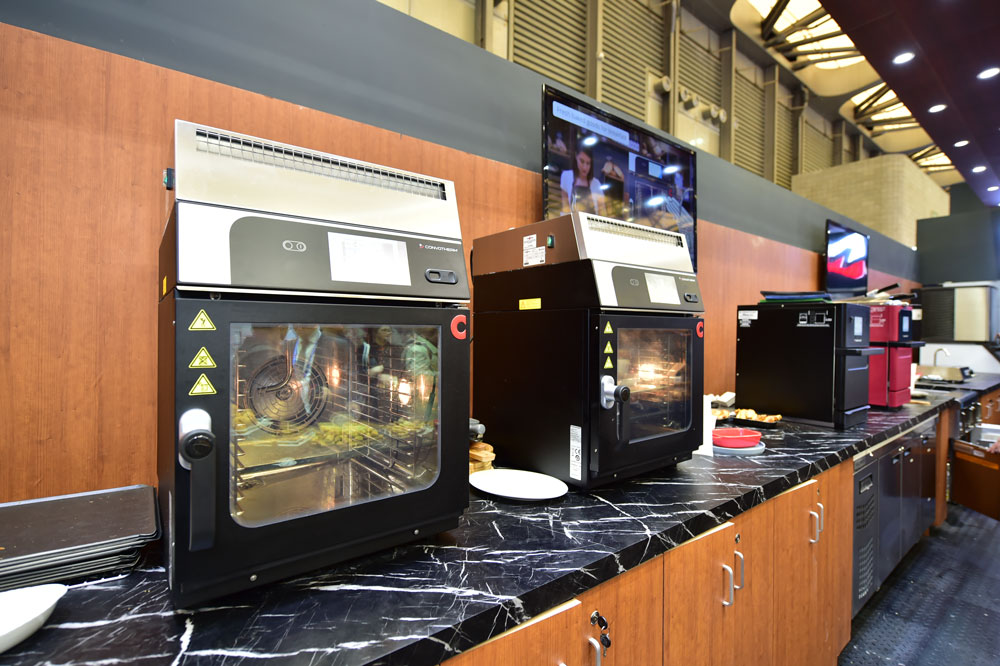
Going forward, where else are we heading to for kitchens of the future? Are we at the peak? In your opinion, what else can we expect after this?
Today’s kitchen is fast-paced, ever-changing and full of challenges: profitable growth, speed of service, reduction of costs, food safety and quality, to name a few. Foodservice operators need to integrate, automate and simplify. We at Welbilt are not only providing the data to our end users to optimize their operation, but also integrating technology in the design of kitchen and IoT connectivity to provide complete solutions of foodservice equipment. Welbilt’s FITKitchen envisions a commercial kitchen of the future that is designed around the interaction of food, beverage, people and equipment – a kitchen with low labour costs, high productivity, high sales and revenue and fresh menus.
Mr John Zhang has an Engineering degree from the Shanghai Ocean University, China; a Masters in Food Process Engineering from the University of Reading, UK and a PhD in Chemical Engineering from the University of Birmingham, UK. With more than 20 years of experiences in the F&B trade having worked on numerous successful projects for big names in the industries, Mr. Zhang was instrumental in developing and managing many equipment projects as well as providing support to open new markets.
href="#" data-color-override="false" data-hover-color-override="false" data-hover-text-color-override="#fff">Button Text









